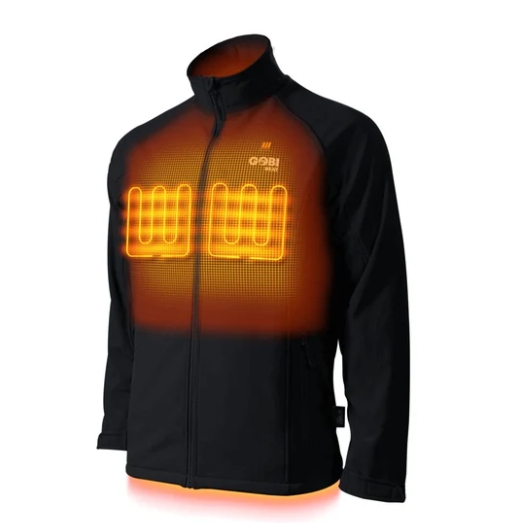Curious about how long heated jackets stay warm on a single charge? Whether you’re using one from NRHEAT (nrheat.com) or other top brands like Gobi Heat, Ororo, or Milwaukee, knowing battery lifespan and heat retention helps you choose the best jacket for your needs.
Typical Battery Runtime by Heat Level
Table of Contents
ToggleBattery life varies widely depending on the brand, battery capacity, and heat setting:
- Low heat: 8–10 hours
- Medium heat: 4–7 hours
- High heat: 2–4 hours
For example:
- Gobi Heat uses a 7.4 V 6700 mAh lithium-ion battery:
- High: ~6 hours
- Medium: ~8 hours
- Low: ~10 hours
- Ororo (Mini 5K battery, ~4800 mAh):
- High: 3–4 hours
- Medium: 6–7 hours
- Low: 8–10 hours
Why Cold Weather Drains Batteries Faster
Extreme cold affects lithium-ion performance, reducing capacity output:
- At around 14 °F (−10 °C), runtime drops significantly. Ororo’s results show runtimes of 3.3 hrs (high), 6.7 hrs (medium), and 11.2 hrs (low) at 14 °F
- Cold weather increases internal resistance, causing faster discharge.
Tip: NRHEAT jackets often come with high-capacity batteries (up to 10 000 mAh) and insulated designs to maintain runtime in sub-zero temperatures. Visit nrheat.com to explore battery options and insulation specs.
Battery Capacity & Voltage Matter
- Larger mAh batteries = longer heat.
- Higher voltage systems (like 12 V for motorcycle jackets) deliver faster heating but drain quicker.
- Example from Reddit: 12 V 3Ah ≈ 36 Wh → ~6 hrs on a 6 W jacket (minus losses)
- Milwaukee M12 jacket users report ~2–2.5 hours on high with 3 Ah packs; up to ~6 hrs using M18 3 Ah & adapter
NRHEAT allows custom voltage ranges (5 V, 7.4 V, 12 V) and battery capacities, enabling brands to tailor runtime for specific use cases.
How Insulation Affects Warmth Duration
Heated jackets combine internal heating elements with engineered insulation:
- Better thermal retention helps prolong warmth even when the heater is off.
- Soft-shell and down options (as offered by NRHEAT) affect retention differently:
- Soft-shell: Breathable, good in damp climates.
- Down: Excellent warmth, less ideal if wet.
Tips to Maximize Warmth Duration
- Use lower heat settings when possible — more conservative.
- Pre-warm inside before heading out to reduce demand.
- Carry a spare battery or opt for swap-style long-lasting packs—NRHEAT supports dual battery setups.
- Store and charge batteries properly, avoiding extreme cold.
- Match jacket style to activity — high heat modes for static use, low for moving.
NRHEAT: Customizable for Any Runtime Need

If your brand needs heated jackets with specific runtime goals, NRHEAT (nrheat.com) supports:
- Large-capacity lithium-ion packs for extended use
- Custom voltage systems for varied use cases (e.g., 12 V for biking)
- 2–4 programmable heating zones
- Waterproof, durable shell and insulation options
- OEM/ODM production with fast sampling and certification compliance
Brands can tailor “how long a heated jacket stays warm”, optimized for user environment and activities.
Quick Reference: Runtime Overview
| Heat Setting | Typical Duration | Factors Affecting Runtime |
|---|---|---|
| Low | 8–10 hrs | Battery size, insulation, temp |
| Medium | 4–7 hrs | Jacket efficiency, user movement |
| High | 2–4 hrs | Voltage draw, external cold |
Final
Heated jackets typically stay warm between 2 to 10 hours, depending on heat settings, battery capacity, insulation, and weather. NRHEAT jackets, designed with custom battery and insulation options, offer tailored runtime solutions—ideal for brands targeting specific user scenarios. Explore models, specs, and battery options at nrheat.com to suit your design or consumer needs.






